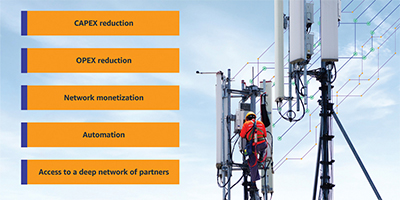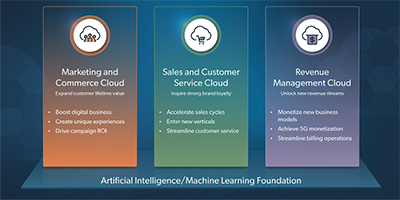Recent technology demonstrations by Intelsat are shedding light on how its 5G software-defined unifying network will provide a frictionless connectivity experience that supports global roaming and delivers exceptional communication experiences to everyone.

Reports and Coverage
Microwave technology - Enabling 5G around the globe
At the onset of the pandemic, there were fears that restrictions in economic activity would halt 5G deployment efforts around the world. However, with Covid-19 highlighting the significance of cellular technology and connectivity in these uncertain times, we have witnessed 5G adoption accelerate at an incredible rate, at both organizational and industrial levels. Much of the current 5G momentum could be credited to innovations in microwave technology, which is only set to become increasingly important in the coming years.
AWS is how communications service providers (CSPs) are reinventing communications
AWS is unlocking the potential of 5G and powering business outcomes for CSPs by co-innovating and enabling cloud-based, end-to-end 5G networks that deliver consistent, cost effective performance from core to the edge.
Seizing the opportunities of 5G in the UAE
By Femi Oshiga, vice president of Service Providers for the Middle East & Africa, CommScope
Accelerating innovation with Netcracker Cloud BSS
Operators must use cutting-edge transformation software to move beyond connectivity and offer new services for greater revenue growth in the 5G era. This software, particularly on the IT side, must be able to intelligently unify edge cloud, monetize different cloud domains, automate virtual RAN and leverage partner-centric revenue streams for multiple verticals. Operators must create multi-partner business models to monetize 5G and match the rapid pace of innovation in the industry. This will require business models with rapid service innovation and dynamic settlements in a B2B2X setting for consumers, businesses, government agencies and other entities.
TELUS’ approach to making 5G investments pay off
By: Dr. Ibrahim J. Gedeon, chief technology officer, TELUS
Enterprise private 5G networks will help reshape how business gets done
By Honoré LaBourdette, vice president, Telco, Media & Entertainment, Red Hat
SES leads satellite-enabled 5G tests
Mobile operators have used GEO satellite connectivity for years to backhaul traffic from cell sites in remote or rural areas without fiber or have low bandwidth needs.
Interconnection is key for future growth, says RIPE NCC’s Hans Petter Holen
The Internet in the Gulf States region has made enormous strides over the past decade in terms of growth. This has largely been driven by the digitalisation across different industries, economic development in general, and innovation in mobile Internet services. However, one factor consistently acting against this has been a lower level of interconnection compared to what we see in other regions. Less peering means higher latency, increased costs, and lower security (as local traffic passes through foreign centres of interconnection). As more people come to rely on latency sensitive applications like streaming, gaming and IoT, this approach might not be very sustainable over the long term.














